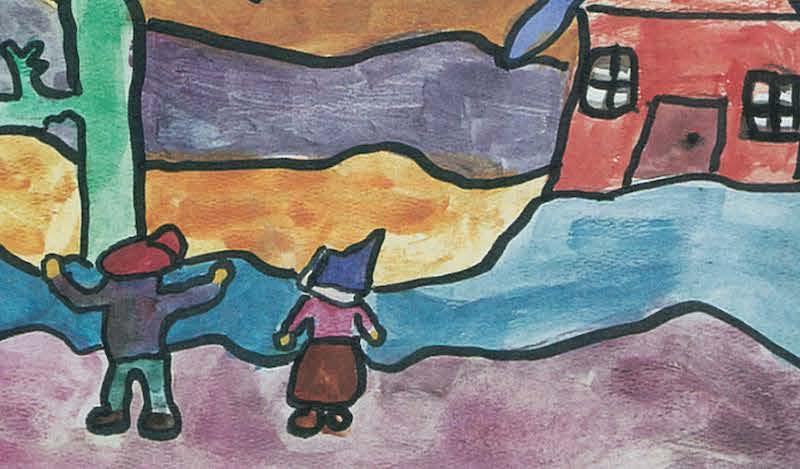
Teaching Critical Challenges via Dramatic Arts: Two Curriculum Units for Primary and lunior Grades
Critical challenges via dramatic arts allow Primary and Junior students to approach problems in fresh ways. Students question what they know, do, and believe by exploring past judgements through dramatic arts activities. Dramatic arts allow students to add another layer to the quality of their thinking. Students expand their abilities to define their personal views, consider alternative points of view and assess emerging evidence within the context of a group dramatic arts critical challenge. Infusing critical thinking throughout children’s school lives is approached through dramatic arts critical challenges.
The critical challenges begin with a critical question or critical task that children explore. Each critical challenge in dramatic arts has key teaching components.
An overview describes the focal point of the exploration and the key learning activities that students will investigate. Requisite tools provide an inventory of the resources needed to pursue the critical dramatic arts challenge. Suggested activities describe the components of the dramatic arts lesson’s introduction and its approach to the requisite tools. Authentic assessment criteria and procedures are described in the evaluation component of each dramatic arts challenge. Extensions provide a broader lens to increase the integrated nature of primary programs. References are provided when referred to in the critical dramatic arts challenge. Critical challenges in dramatic arts allow students to raise their voices as competent thinkers.
Meeting Curriculum Expectations
What follows are two units you can use with your class immediately. The activities speak specifically to reasoning, communication and organization of ideas as outlined in the Language, Grades 1-8 curriculum:
- Within “Writing” the units speak to reasoning.
- Within “Reading” the units align with critical thinking.
- Within “Oral and Visual Communication” the units work very well in all four areas of the specific expectations, as outlined on page 40 of the Language document.
The units also work well with the Arts curriculum, depending on the exact way the instruction is approached and the specific expectations the teacher wishes to assess using Drama and Dance.
Teaching through critical challenges, as outlined in these model units, can also work with Mathematics, Health and Physical Education and Science and Technology, depending on the grade and the specific expectation the teacher wishes to teach using a critical challenge approach.
Unit One: Bear Habitat
Critical task
Design a desirable home for a type of bear of your choice: black, polar, grizzly, panda.
Overview
After researching various bears through films, books, the Internet and discussions, students work together to define the features of an appropriate bear habitat. Students use the criteria they chose to design a home for the type of bear they have chosen.
Requisite Tools
1) Background knowledge: habitat needs of various bears.
2) Criteria for judgement: features of a good home for a particular type of bear.
3) Critical thinking vocabulary: evidence
4) Thinking strategies: information webbing; role-play of solutions.
5) Habits of mind: inquiring or critical attitude.
Suggested Activities
- Ask students what they know about bear habitats.
- In the whole class grouping, brainstorm bear habitats to create a web from the initial brainstorm. Remind students that a web is a method for recording information and that it can be expanded throughout the activity.
- Read A Book of Fun from Paddington by Michael Bond. Read other books about bears that the students have already enjoyed in their Bear Unit (see Overview). Use the books to augment the web of ideas listing the features of a good bear home.
- Engage the children in a documentary or video about authentic bear habitats. Ask pairs of students to observe: how bears move in their homes; how bears communicate with others in their homes; how bears rest in their homes. At the end of the video, add to the web of bear home ideas.
- Revisit the web, assisting the class to develop a set of criteria for a good bear home. List student responses on a class chart.
- Develop a new version of this story with the students. Read the class version as a big book, involving students with the text. Ask students if they would like to be the bear in this home. Ask students what would and wouldn’t be the desirable characteristics of this home.
- Define the critical task to the class: Design a home for bear types of your choice, imagining you are a bear of the type chosen.
- Ask students to share and critically review each other’s designs in light of the criteria of a good bear home.
- Ask students to demonstrate their ability to live in their designated home as their chosen type of bear.
Evaluation
- While students are formulating their habitat, observe them to see if they demonstrate an inquiring and critical attitude to the task.
- Do students formulate questions about types of bears and their habitats?
- Do students strive to learn more about their chosen bear types and their habitat needs?
- Do students demonstrate the criteria for good bear homes?
- Do students know how they would use their homes if they were the bear they have chosen?
Extension
- The students take an in-class tour around the world highlighting bear types and their habitats. Each student moves in his or her habitat demonstrating its suitability.
- Students move as bears to neighbouring class bear habitats. Students use body language and sounds to develop a bear language. New groupings could develop new bear species and the subsequent need for new bear homes.
- Students are videotaped in their new blended homes. Reviewing the tapes enables new discussion about the suitability of the new homes.
- Students communicate through audio tapes to share their views on their habitats. Tapes are reviewed for consistency and suitability.
- Photographs are taken of students in their
- blended environment. Students view other
- works and critically reflect on similarities in
- appropriate habitats. Differences are evaluated
- in light of the original habitat criteria.
References
- A Book of Fun from Paddington by Michael Bond.
- Class big book version of Goldilocks and the Three Bears.
- Individual copies of bear books, poems and playlets.
Unit Two: Sharing Personal Attributes
Critical Question
How should personal strengths (gifts) be shared among classmates?
Overview
Based on the book Swimmy by Leo Leonni, students explore a situation in which a child feels like an outsider. Students brainstorm varied ways to use their personal strengths to move from outsider to useful group member. Students are encouraged to generate numerous possibilities and then to highlight priorities. Students should know exactly why they have chosen something as a priority. The ideas not chosen as priorities can also be reviewed and/or combined with other ideas when the priorities have been utilized.
Requisite Tools
1) Background knowledge - knowledge of being the outsider; knowledge of helping the group through utilizing personal strengths.
2) Criteria for judgment - qualities of self that assist a group; qualities of an inviting or personable group.
3) Critical thinking vocabulary - evidence.
4) Thinking strategies - webbing; information chart; role-play of solutions.
5) Habits of mind - self-esteem; positive self-regard.
Suggested Activities
- Read the book Swimmy by Leo Leonni. Ask students what feelings the book brings out, what the book reminds them about teamwork. Explore Swimmy’s feeling with the students.
- Ask students to brainstorm their initial response to develop ideas for using personal attributes to assist a group. Use this chart to form a web as a visual cue of their responses.
- Develop a chart, with four columns. Ask students to move their ideas into the four columns. (See chart A.)
- Students should give reasons for inferring that their solution is the best by referring to the characteristics of a good group member generated by the class.
- Review the information and present the critical question: Which of the possible solutions to Swimmy’s social problem best reflect the characteristics of a good group member?
- Ask students to role-play in groups varying the solutions they generate.
- Ask students to join with another group to find similarities and role-play their blended/new solutions.
- Continue blending the role-play groups until the class is one group.
- Ask students to add movement levels and sound to their locomotion as a unit.
- Videotape the class in this form. Take a Polaroid photograph of their new formation. Compare this picture to their yearly school class picture. Discuss the differences about the qualities of a good group member in both photographs.
Evaluation
Assess how well students demonstrated their ability to match their choices to the qualities of an effective group member.
Extension
- Ask students to add coloured scarves to their movements as one large class fish. Ask students to collectively decide why scarves are or are not noticed.
- Ask students to regroup and change positions in the structure while maintaining one class fish.
- Ask students to draw a representation of their scarf as a scale on the fish with pastel crayons. Ask students to experiment with the placement of the pastel scales until the class fish is formulated.
References
Swimmy by Leo Leonni.
Dr. Laurie Bizero is an Assistant Professor in the University of Windsor's Faculty of Education. Previously she served as an elementary school principal and has taught all grades - kindergarten to grade 8. She has also served as a principal in the secondary panel.

